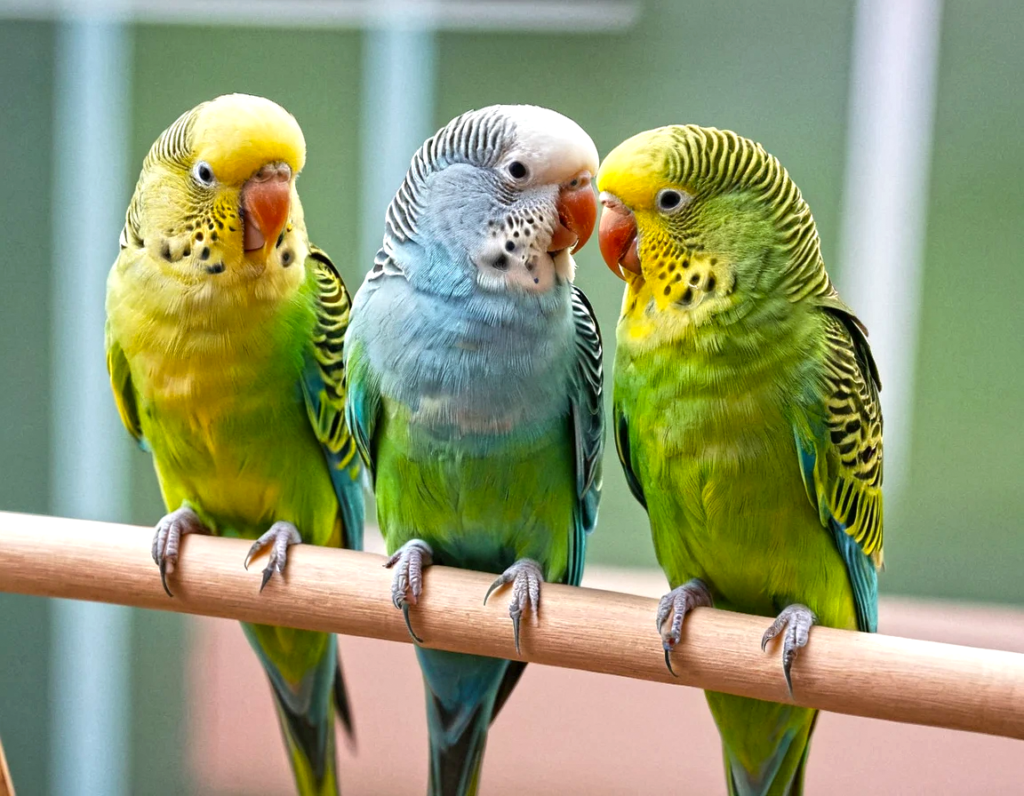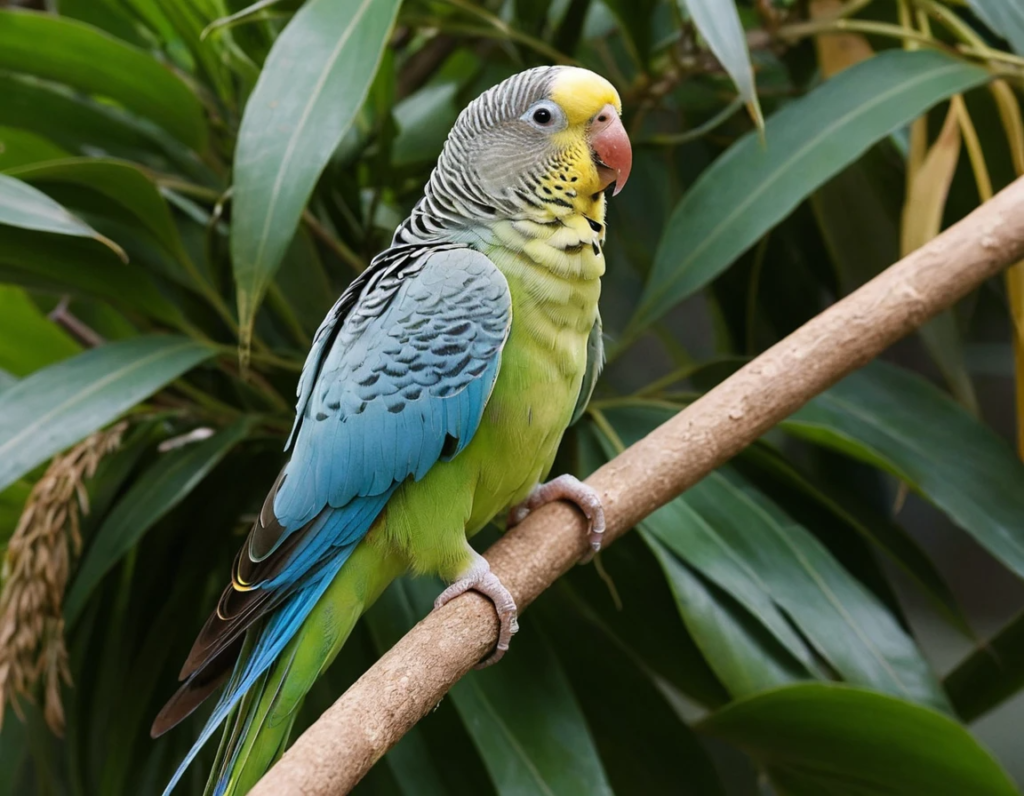
Parakeet Diet Chart: What to Feed Your Bird Daily
Parakeets may be small, but their appetites are mighty! If you want a happy, chirpy bird that doesn’t glare at you from the corner of its cage, you need to make sure you’re feeding it properly. A well-balanced diet is crucial for keeping your little feathered friend healthy, active, and full of personality (which often includes head tilts and side-eyeing you). Let’s dive into the perfect Parakeet diet chart so you can keep your bird in top shape!
The Perfect Parakeet Diet Chart
Food Type | Percentage of Diet | How Often? | Examples |
High-Quality Seeds & Pellets | 50-60% | Daily | Parakeet seed mix, pellets |
Fresh Vegetables | 20-25% | Daily | Spinach, carrots, bell peppers, broccoli |
Fresh Fruits | 10-15% | Few times a week | Apples (no seeds!), bananas, berries, oranges |
Protein & Grains | 5-10% | Occasionally | Cooked eggs, quinoa, brown rice |
Treats & Extras | Less than 5% | Sparingly | Millet spray, honey sticks |
Seeds vs. Pellets: The Great Debate
Many parakeet owners wonder: Should I feed seeds or pellets? Well, both have their pros and cons. Seeds are like fast food—delicious, but not always the healthiest choice. Pellets are packed with nutrients but can be as exciting as eating plain oatmeal every day. The best approach? A mix of both!
Best Seed & Pellet Choices:
✅ A high-quality seed mix (not just sunflower seeds!)
✅ Fortified pellets with essential vitamins
✅ Avoid seed-only diets—these lack nutrients!
Vegetables: The Green Goodness
Parakeets may not be begging for a salad, but fresh veggies are essential for their diet. These provide vitamins, minerals, and hydration.
Top Vegetables for Parakeets:
🥦 Broccoli (tiny trees for tiny birds!)
🥕 Carrots (shredded or chopped)
🌿 Spinach (but not too much—too much oxalate is bad!)
🫑 Bell peppers (colorful and packed with nutrients!)
Pro tip: Always wash veggies thoroughly, and chop them into small pieces to avoid choking hazards.
Fruits: Nature’s Sweet Treats
Fruits are like dessert for parakeets—delicious but best in moderation.
Best Fruits for Parakeets:
🍏 Apples (seedless!)
🍌 Bananas (soft and easy to eat)
🍓 Berries (small and packed with antioxidants)
🍊 Oranges (a little vitamin C never hurt!)
Avoid avocados and fruit seeds, as they can be toxic to birds.
Protein & Grains: Power Food for Parakeets
A little bit of extra protein and grains can help keep your parakeet’s feathers shiny and their energy levels high (which means more zooming around the cage!).
Healthy Protein & Grains:
🥚 Cooked eggs (tiny portions)
🍚 Brown rice or quinoa (a small spoonful)
🌾 Whole grains (a few bites of whole wheat bread)
Pro tip: Never season your bird’s food—no salt, sugar, or spices!
Treats: The Fun Part!
Parakeets love a good treat, and let’s be honest—you probably love giving them treats too. Just don’t overdo it!
Best Treats:
🌾 Millet spray (parakeet candy!)
🍯 Honey sticks (only occasionally)
🥜 Unsalted nuts (tiny bits of almonds or walnuts)
Too many treats can lead to weight gain and health issues, so keep them as occasional rewards, not everyday meals.
Bonus Tips for a Healthy Parakeet
✔ Fresh water daily – No one likes stale water, including your bird.
✔ Cut food into small pieces – No giant chunks, please!
✔ Monitor eating habits – If your bird stops eating, it could be sick.
✔ Keep the diet varied – No one wants to eat the same thing every day (not even your parakeet!).
Final Thoughts
A well-balanced Parakeet diet chart isn’t just about keeping your bird full—it’s about keeping them happy, active, and healthy. The right mix of seeds, pellets, fresh foods, and occasional treats will ensure your parakeet stays chirpy and full of energy. Plus, you’ll get to enjoy watching them happily munch away (and maybe even throw a little food around just for fun).
With the right diet, your parakeet will be living its best life—one tiny bite at a time! 🦜💚
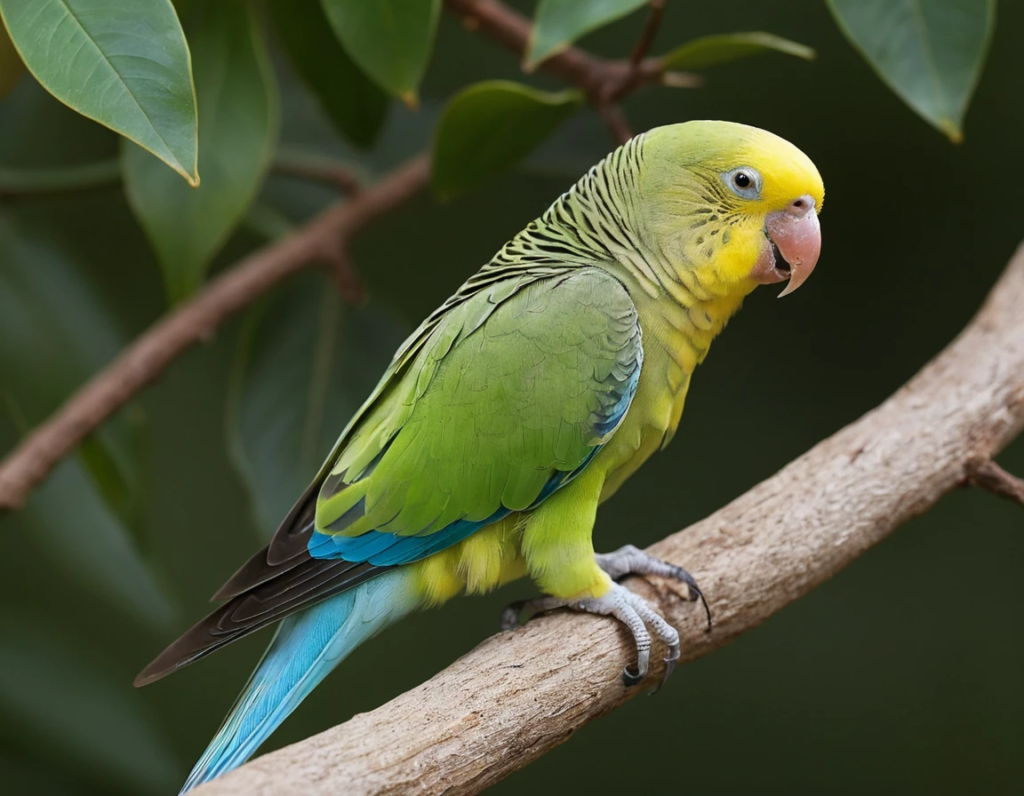
Best Parakeet Diet Plan: Seeds, Pellets, and Fresh Foods
If you think your parakeet is happy surviving on just a handful of seeds, think again! A balanced diet is the secret to keeping your feathered friend chirping with joy. So, let’s talk about the ultimate parakeet diet chart that includes seeds, pellets, and fresh foods—because variety is the spice of life, even for birds!
1. Seeds: The Classic but Not-So-Perfect Diet
Seeds are like fast food for parakeets—delicious but not ideal as a full-time diet. While they provide essential fats and nutrients, relying solely on seeds can lead to vitamin deficiencies and an overweight bird (yes, parakeets can get chubby too!).
Best seeds for parakeets:
- Millet (their absolute favorite!)
- Canary seeds
- Flax seeds (for those omega-3 benefits)
- Safflower seeds (a healthier alternative to sunflower seeds)
Make sure to mix seeds with other foods to prevent picky eating habits!
2. Pellets: The Nutrient Powerhouse
Think of pellets as the multivitamin your parakeet actually enjoys. These little power-packed nuggets are formulated to provide balanced nutrition without the excess fat of seeds.
Pellet feeding tips:
- Look for high-quality, dye-free pellets.
- Introduce them gradually by mixing them with seeds.
- Be patient! Some parakeets take time to accept pellets.
A good parakeet diet chart should include pellets as at least 50% of their daily intake.
3. Fresh Foods: The Game Changer
A little fresh produce goes a long way in keeping your parakeet healthy and happy. Fruits and vegetables add essential vitamins and hydration to their diet.
Parakeet-safe veggies:
- Carrots (grated or sliced)
- Spinach and kale (because greens are life!)
- Peppers (yes, even spicy ones!)
- Broccoli (tiny tree snacks!)
Bird-approved fruits:
- Apples (seedless, of course)
- Bananas (perfect for tiny beaks)
- Berries (strawberries, blueberries, and raspberries)
- Mangoes (a tropical delight)
Remember, fresh foods should make up about 20-25% of your parakeet’s diet.
4. Treats: Because Everyone Loves Snacks!
Treats are great for training and bonding, but moderation is key. Healthy treat options include:
- Sprouted seeds (nutrient boost!)
- A tiny bit of whole-grain bread
- Boiled eggs (yes, birds eat eggs too!)
Final Thoughts: The Perfect Balance
A well-rounded diet consisting of 50% pellets, 30% seeds, and 20% fresh foods will keep your parakeet in top shape. Just like humans, they thrive on variety, so mix things up to keep them excited about mealtime.
By following this parakeet diet chart, you’re ensuring a long, happy, and healthy life for your feathered companion. And who knows? With the right diet, your little bird might just start singing your praises! 🦜
Healthy Parakeet Diet Chart: What’s Safe and What’s Not?
If you want your parakeet to live a long and chirpy life, their diet is key! These little feathered friends may seem content munching on seeds all day, but a balanced diet is essential for their health. So, what should you feed them, and what should you absolutely avoid? Let’s break it down in this parakeet diet chart.
Parakeet Diet Chart: The Basics
Parakeets, also known as budgies, thrive on a varied diet. Here’s what should be on their menu:
1. Seeds: The Treat, Not the Main Course
Seeds are often the first thing people think of when it comes to parakeet food. While they love them, seeds are high in fat and should only make up about 10-20% of their diet. Think of seeds as the junk food of the bird world—delicious but not enough to sustain a healthy lifestyle.
2. Pellets: The Powerhouse
A high-quality pellet diet should be the foundation of your parakeet’s meals. These are specially formulated to provide the right mix of nutrients. If your parakeet turns its beak up at pellets, try mixing them with seeds at first and gradually reducing the seed portion.
3. Fresh Fruits: The Sweet Treats
A little bit of fruit makes a great snack! Here are some safe and delicious options:
- Apples (without seeds!)
- Bananas
- Berries
- Grapes
- Melons
- Oranges (in moderation due to acidity)
Fruits contain natural sugars, so keep them as occasional treats, not daily staples.
4. Vegetables: The Superfoods
Veggies are a must in any parakeet diet chart! They provide essential vitamins and minerals. Some bird-approved options include:
- Carrots
- Spinach
- Broccoli
- Bell peppers
- Cucumber
- Peas
- Sweet potatoes (cooked)
If your parakeet initially snubs veggies, don’t worry! Try different textures—some prefer leafy greens, while others like crunchy bits.
5. Protein: The Extra Boost
Yes, even parakeets need protein! A tiny bit of cooked egg, mealworms, or legumes can be a great supplement, especially during molting season.
6. Calcium: For Strong Bones and Beaks
Cuttlebones and mineral blocks help provide essential calcium. You can also crush eggshells (baked to eliminate bacteria) and sprinkle them over food.
What NOT to Feed Your Parakeet
While many foods are great for your feathery friend, some can be dangerous or even deadly. Here are the top no-nos:
❌ Avocado – Toxic to birds ❌ Chocolate – Contains theobromine, which is harmful ❌ Caffeine – No coffee for your birdie! ❌ Onions & Garlic – Can cause serious health issues ❌ Alcohol – (Do we even need to say this?) ❌ Salty or Sugary Foods – Not good for their tiny bodies ❌ Apple Seeds & Fruit Pits – Contain cyanide-like compounds ❌ Dairy – Birds can’t digest lactose properly
How to Transition Your Parakeet to a Healthier Diet
If your bird is a seed addict, don’t go cold turkey (or cold millet, in this case). Gradually mix in more pellets, veggies, and fresh foods over a few weeks.
Pro Tip: Make mealtime fun! Hang leafy greens in their cage, chop fruits into fun shapes, or try hand-feeding to build trust.
Final Thoughts
A proper diet is essential for your parakeet’s happiness and longevity. With the right balance of pellets, fresh fruits, veggies, and occasional treats, your bird will be singing (literally) with joy! Keep this parakeet diet chart handy and watch your feathered friend thrive.
Remember, a healthy bird is a happy bird. And a happy bird means fewer dramatic squawks when you forget to refill their food bowl!
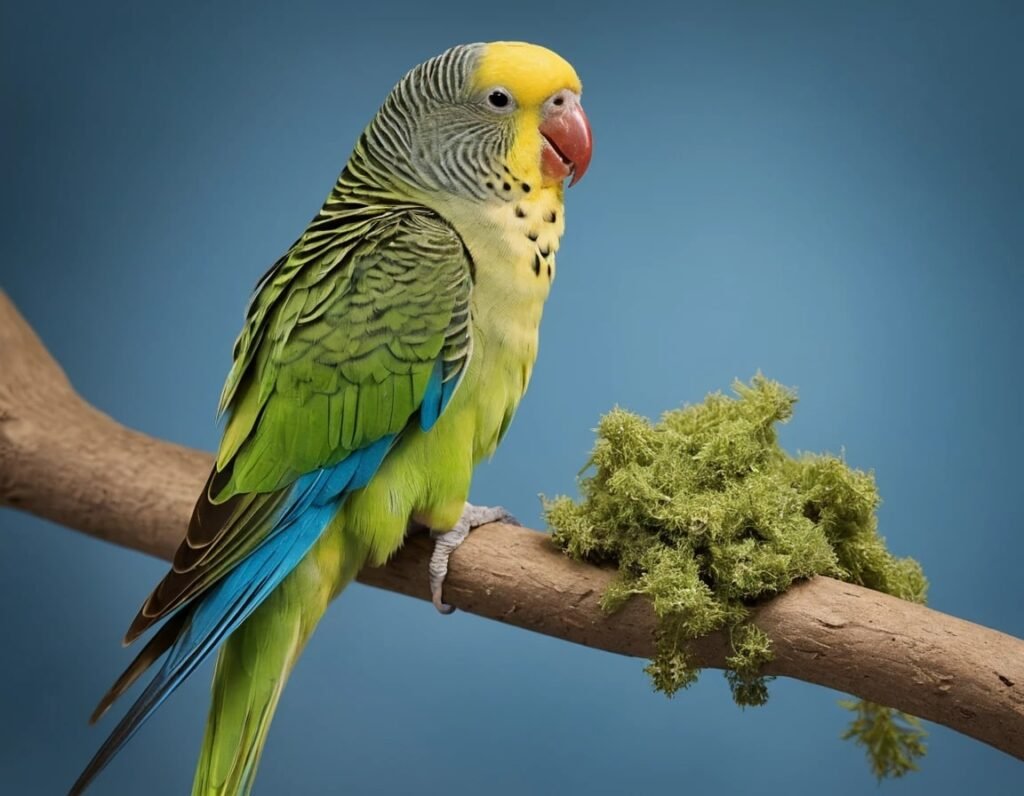
Parakeet Feeding Guide: How Much and How Often to Feed
Parakeets are tiny birds with big appetites! If you’ve ever seen your feathered friend happily munching away, you might wonder: Am I feeding them too much? Too little? Should they really be stealing my breakfast? Let’s break down the best feeding routine for your budgie while keeping their diet balanced and nutritious.
How Much Should You Feed Your Parakeet?
When it comes to portion size, parakeets don’t require a feast, but they do need consistent, measured meals. A proper Parakeet diet chart should include:
- Seeds or Pellets: About 1.5 to 2 teaspoons per day
- Fresh Vegetables: A few small pieces daily (think a tablespoon total)
- Fruits: 2-3 times a week as a treat (no more than a teaspoon at a time)
- Eggs or Protein (Occasionally): A tiny portion once a week
- Fresh Water: Always available and changed daily
Should You Choose Seeds or Pellets?
Ah, the age-old debate. Seeds or pellets? If parakeets had a say, they’d probably choose a diet of 100% seeds (because who doesn’t love a carb-loaded snack?). However, a balanced diet is key to a long and healthy life.
- Seeds: Tasty but high in fat. Think of them as the junk food of the bird world.
- Pellets: A more balanced option with all the necessary vitamins and minerals.
- Best Choice? A mix of both! Start incorporating pellets into their diet slowly if they’re used to seeds.
How Often Should You Feed a Parakeet?
Parakeets have fast metabolisms, so they need fresh food daily. Here’s an easy feeding schedule:
- Morning: Provide fresh seeds/pellets and a few veggie pieces
- Afternoon Snack (Optional): A small treat (a bit of fruit or a seed stick)
- Evening: Top off their dish if needed and refresh the water
Parakeets love to snack throughout the day, so make sure they always have access to food – but don’t let them overeat (yes, even birds can get chubby!).
Common Feeding Mistakes to Avoid
🚫 Too Many Seeds – A high-seed diet can lead to obesity and health issues.
🚫 Dirty Water – Always keep their water dish clean to prevent illness.
🚫 Toxic Foods – Avoid avocado, chocolate, caffeine, onion, garlic, and apple seeds.
🚫 Overfeeding Fruits – While they love them, too much sugar isn’t great for your bird.
Wrapping It Up
A well-balanced Parakeet diet chart ensures your bird stays happy, healthy, and full of energy (for all that chirping at 6 AM). Just remember to mix things up, provide fresh water daily, and keep portion sizes in check. Your little buddy will thank you – probably with a happy chirp or a playful head tilt!
Need help with more parakeet care tips? Let me know – and happy feeding!
Can Parakeets Eat Fruits and Vegetables? Full Diet Chart
Parakeets may be small, but they have big appetites and even bigger personalities! If you’ve ever caught your feathery friend giving you the side-eye while munching on a snack, you might be wondering, “Can parakeets eat fruits and vegetables?” The short answer: Yes! But not all fruits and veggies are safe. Let’s break it down with a complete parakeet diet chart so your little buddy can stay happy and healthy.
Why Fruits and Vegetables Matter in a Parakeet’s Diet
Seeds alone won’t cut it! A balanced diet with fresh fruits, vegetables, and pellets ensures your parakeet gets all the necessary vitamins and nutrients. Think of it this way: If you only ate chips every day, you’d be pretty cranky (and unhealthy), right? Same goes for your parakeet!
Safe Fruits for Parakeets
Parakeets love fruit, but moderation is key because of the sugar content. Here are some bird-approved options:
✅ Apples (seedless)—crunchy and delicious! Just remove the seeds. ✅ Bananas – A soft, sweet treat. Bonus: No need to peel it for them! ✅ Blueberries: Tiny, tasty, and packed with antioxidants. ✅ Grapes (seedless) – A favorite snack, but limit portions due to sugar. ✅ Mango – A tropical delight! No skin or pit, please. ✅ Pears (seedless) – Juicy and refreshing. ✅ Melons (watermelon, cantaloupe, honeydew) – Hydrating and nutritious. ✅ Strawberries – A berry good choice (pun intended).
🛑 Fruits to Avoid: Avocado (toxic! ), citrus fruits (too acidic), and apple seeds (contain cyanide).
Safe Vegetables for Parakeets
Veggies are a must for a well-rounded parakeet diet chart. They provide essential vitamins and minerals to keep your bird in top shape!
✅ Carrots – Great for beak exercise and loaded with Vitamin A. ✅ Spinach – A leafy green powerhouse (but feed in moderation). ✅ Broccoli – Tiny trees for tiny birds! ✅ Cucumber – Hydrating and refreshing. ✅ Bell Peppers – A crunchy vitamin boost. ✅ Sweet Potatoes (cooked) – A soft, nutrient-packed option. ✅ Zucchini – Easy to chew and full of goodness.
🛑 Vegetables to Avoid: Onions, garlic, mushrooms, and raw potatoes (all toxic to birds!).
The Ultimate Parakeet Diet Chart
Food Type | Recommended Options | How Often? |
Seeds | High-quality seed mix | Daily (but not the only food!) |
Pellets | Nutritionally balanced pellets | 50-60% of diet |
Fruits | Apples, bananas, grapes, etc. | 2-3 times per week |
Vegetables | Carrots, broccoli, spinach, etc. | Daily |
Treats | Millet, boiled egg, plain rice | Occasionally |
Water | Fresh, clean water | Daily refresh |
Tips for Introducing Fruits & Veggies
If your parakeet acts like a drama queen and refuses new foods, don’t worry! Here are some tricks:
🥕 Start Small: Introduce tiny portions mixed with their usual food. 🥦 Be Persistent: Some parakeets take time to warm up to new flavors. 🍏 Make It Fun: Clip leafy greens to the side of the cage like a natural snack bar. 🍌 Try Different Textures: Some birds prefer crunchy over soft.
Final Thoughts
Including fruits and veggies in your parakeet’s diet is a great way to boost their health and happiness. Just remember the golden rule: variety and moderation! Stick to the parakeet diet chart, avoid toxic foods, and keep an eye on what they like best.
So, next time you’re chopping up some fruit, why not share a bite with your tiny feathered friend? Just don’t be surprised if they demand a bigger portion next time! 🦜😆
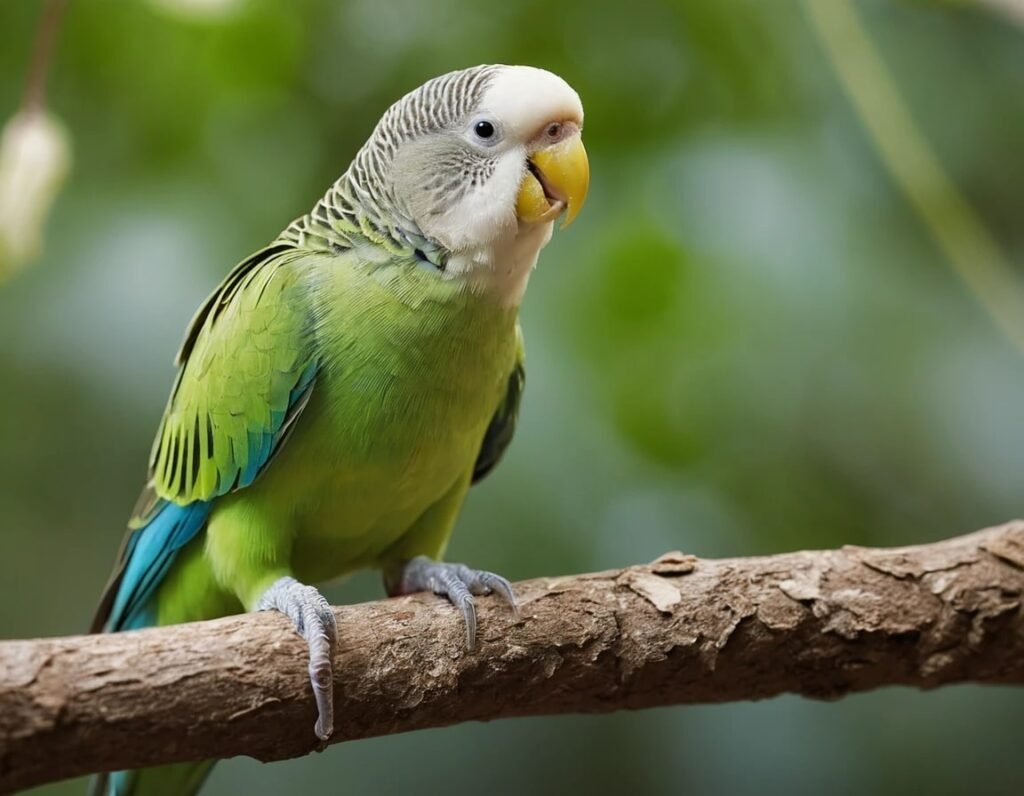
Homemade Parakeet Food Chart: Natural and Healthy Options
If you’ve ever caught your parakeet eyeing your snack, you know they love variety! A balanced diet is key to their health, and while store-bought food works, homemade options can be fresher and more nutritious. Let’s dive into the best homemade food choices for your feathered friend while keeping the “Parakeet diet chart” in mind.
Why Choose Homemade Parakeet Food?
- Fresher ingredients – No stale pellets or mystery seeds.
- No artificial additives – You control what goes in.
- Variety and enrichment – More exciting than the same old seed mix.
Homemade Parakeet Diet Chart
Food Group | Recommended Foods | How Often? |
Seeds & Grains | Millet, quinoa (cooked & cooled), flaxseeds, oats | Daily, but in moderation |
Fruits | Apple (no seeds), banana, berries, mango, grapes | 3-4 times per week |
Vegetables | Carrots, spinach, bell peppers, broccoli, sweet potato | Daily |
Proteins | Boiled egg (mashed), lentils (cooked), chickpeas | 2-3 times per week |
Herbs | Basil, cilantro, parsley | Occasional treat |
Foods to Avoid
🚫 Avocado (toxic!)
🚫 Chocolate (for you, not your bird)
🚫 Onions & garlic (bad for their tummy)
🚫 Salty or sugary foods (no chips, even if they beg!)
Simple Homemade Parakeet Meals
- Veggie & Grain Mix: Cooked quinoa, mashed sweet potato, and finely chopped carrots.
- Fruity Delight: Diced apple, banana, and berries – a fresh treat!
- Protein Boost: Mashed boiled egg with spinach and a sprinkle of flaxseeds.
Final Tips for a Happy, Healthy Parakeet
- Keep it balanced – seeds alone won’t cut it.
- Wash fruits and veggies thoroughly.
- Always provide fresh water.
- Observe your parakeet – if they start throwing food around, they might be a picky eater!
With a well-planned “Parakeet diet chart,” your little buddy can stay healthy and happy. Now, time to see if they prefer quinoa over millet—good luck!
Parakeet Diet for a Longer Life: Essential Nutrients They Need
If you want your parakeet to live a long, happy life filled with chirps, tricks, and the occasional attitude, their diet is the key. Just like humans can’t survive on fast food alone (as much as we’d like to), parakeets need a balanced diet packed with essential nutrients. Let’s break it down so your feathery friend can thrive for years to come!
Why Diet Matters for Parakeet Lifespan
A well-balanced diet can add years to your parakeet’s life. Wild parakeets eat a variety of seeds, fruits, and greens, which keep them energetic and healthy. However, domesticated birds often get stuck with an all-seed diet, which is like eating potato chips every day—not ideal!
Parakeet Diet Chart: The Essentials
Here’s a simple parakeet diet chart to keep your little friend in top shape:
Food Type | Frequency | Benefits |
Seeds (50%) | Daily (but in moderation) | Provides energy but lacks some key nutrients. |
Pellets (25%) | Daily | Balanced nutrition to supplement seeds. |
Fresh Fruits (10%) | 3-4 times a week | Vitamins and hydration. |
Vegetables (10%) | 3-4 times a week | Essential minerals and fiber. |
Eggs or Protein (5%) | Once a week | Boosts feather and muscle health. |
Cuttlefish Bone/ Mineral Block | Always available | Supports beak health and calcium intake. |
What Should Be on Your Parakeet’s Plate?
1. Seeds: The Classic Staple (But Not Too Much!)
Seeds are the favorite meal of most parakeets, but relying only on seeds is like eating French fries all day. Mix things up with quality seed blends that include millet, flax, and chia seeds for variety and better nutrition.
2. Pellets: The Multivitamins of the Bird World
Pellets provide essential nutrients that seeds lack, like vitamin A and calcium. Introduce them gradually by mixing them with seeds, or your parakeet might give you the cold shoulder.
3. Fresh Fruits: The Sweet Treat
Offer apple slices, bananas, berries, and melons, but avoid avocado—it’s toxic for birds. And no, your parakeet doesn’t need a fruit smoothie (as fun as that sounds).
4. Vegetables: The Green Goodness
Spinach, carrots, bell peppers, and broccoli are excellent choices. If your parakeet turns its beak up at veggies, try sneaking them into their food bowl like a sneaky parent hiding veggies in pasta sauce.
5. Protein: A Tiny Boost for Big Health
Hard-boiled eggs, tofu, or mealworms can be given occasionally to support muscle and feather health. Think of it as their version of a protein shake—just without the gym selfies.
6. Calcium: Strong Bones, Happy Bird
Cuttlefish bones and mineral blocks help maintain a strong beak and provide essential calcium. Plus, it keeps your parakeet entertained as they nibble away.
Foods to Avoid (Because You Love Your Bird!)
- Avocado (Highly toxic)
- Chocolate & Caffeine (Bad for their tiny hearts)
- Onions & Garlic (Can cause digestive issues)
- Sugary or Salty Foods (They don’t need junk food!)
- Dairy Products (They can’t digest lactose)
Final Thoughts: Feed with Love and Variety
Providing a balanced diet using this parakeet diet chart will ensure your feathery friend stays happy, healthy, and chirping for years. A mix of seeds, pellets, fresh produce, and essential minerals is the perfect recipe for a long life. And let’s be honest, a healthy parakeet is a lot more fun to have around than one that’s constantly feeling under the weather!
So, next time your parakeet gives you “the look” when you try to sneak in a veggie, just remind them—it’s for their own good!
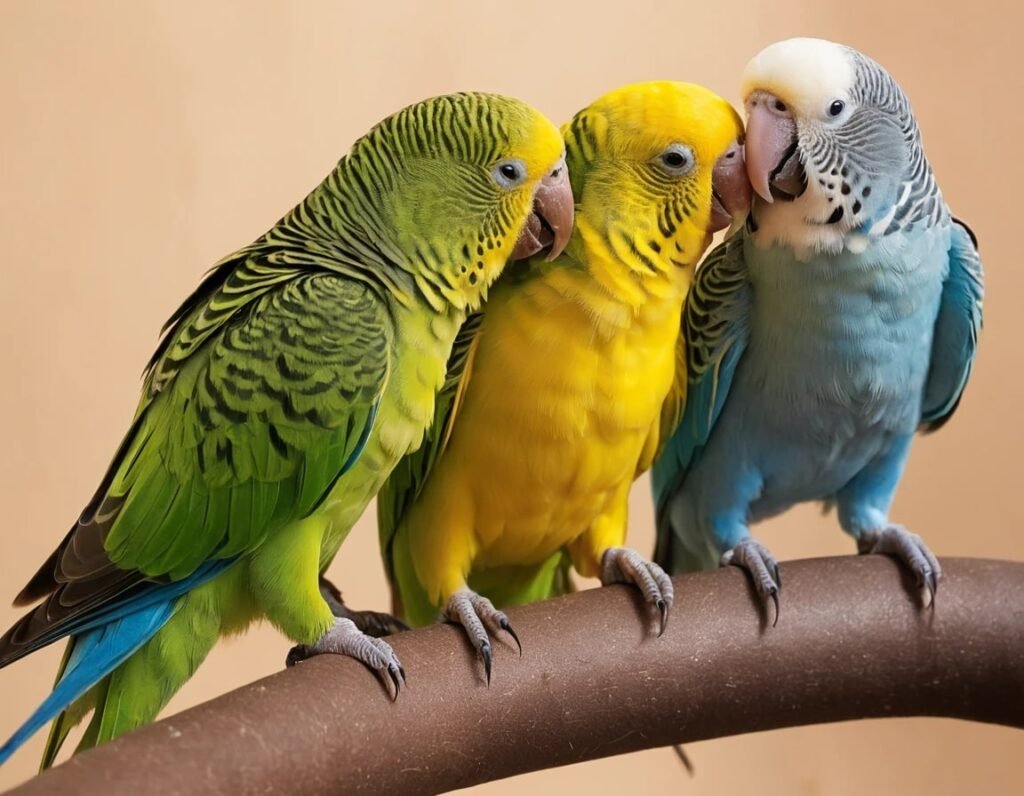
What Do Baby Parakeets Eat? Feeding Chart for All Ages
Baby parakeets are tiny, fluffy, and endlessly adorable, but when it comes to feeding them, many bird owners suddenly panic. “What do I even feed this tiny creature? Can it eat seeds already? Do they drink milk like other babies?” (Spoiler: No, please don’t give your parakeet milk!)
If you’ve found yourself staring at your little feathery bundle of joy, wondering what to do, don’t worry. This guide will break down what baby parakeets eat at different stages, along with a helpful Parakeet diet chart to keep things simple.
0-2 Weeks Old: The Hatchling Stage
At this stage, baby parakeets are completely dependent on their parents for food. If the mother and father are present, they will regurgitate a warm, nutrient-rich substance called crop milk (not to be confused with dairy milk).
What to Feed If Hand-Feeding:
- Special parakeet hand-feeding formula (available at pet stores)
- Warm water to mix with formula (never hot!)
- A small syringe or spoon for feeding
💡 Pro Tip: Be careful with the feeding temperature—too hot can burn their crop, too cold can cause digestion problems. Think of it like Goldilocks: it has to be just right!
2-4 Weeks Old: The Transition Stage
At this age, baby parakeets start experimenting with soft foods while still relying on hand-feeding or their parents’ regurgitated food.
What to Feed:
- Continue hand-feeding formula (about 3-4 times a day)
- Soft, mashed fruits (banana, apple, pear)
- Cooked and mashed vegetables (carrots, sweet potatoes)
- Small bits of moist egg food for extra protein
💡 Fun Fact: Some baby parakeets get food all over their beaks and faces while eating. They’re still figuring things out, so don’t be surprised if they look like tiny food monsters after every meal!
4-6 Weeks Old: The Weaning Stage
This is when baby parakeets start testing out solid foods. They will still want some hand-feeding but will gradually switch to eating on their own.
What to Feed:
- Sprouted seeds (easier to digest than dry seeds)
- Crushed pellets (moistened with water for easy chewing)
- Chopped fruits & vegetables (introducing more variety)
- A shallow dish of water to encourage drinking
💡 Important: Baby parakeets are clumsy eaters, so they might peck at food, drop it, and act like they have no idea what’s going on. It’s normal! Just be patient.
6-8 Weeks Old: Fully Weaned and Independent
By now, your baby parakeet should be eating completely on its own. This is when you can introduce a balanced adult parakeet diet chart.
What to Feed:
- A mix of high-quality seeds and pellets
- Fresh fruits and veggies daily
- Cuttlebone or mineral block for calcium
- Occasional boiled egg or protein-rich treats
💡 Remember: Even though they’re independent eaters now, young parakeets still enjoy spending time with their human. Bonding during meal times can make them feel safe and happy!
Parakeet Diet Chart by Age
Age | Feeding Type | Food Examples |
0-2 weeks | Hand-feeding formula | Special bird formula, warm water |
2-4 weeks | Formula + soft foods | Mashed fruits, veggies, egg food |
4-6 weeks | Weaning stage | Sprouted seeds, softened pellets |
6-8 weeks | Independent eating | Seeds, pellets, fresh fruits/veggies |
Final Thoughts: A Happy, Healthy Baby Parakeet
Feeding a baby parakeet might seem overwhelming at first, but as long as you stick to the right diet and introduce foods gradually, you’ll have a happy, healthy bird in no time. Keep an eye on your parakeet’s behavior—if they’re energetic, playful, and chirping away, you’re doing a great job!
Oh, and don’t be surprised if your parakeet steals your food as it grows older. Many parakeets think anything you eat must be delicious (even if it’s a salad!). Just be careful not to share anything toxic—stick to the Parakeet diet chart, and your little bird will thrive.
Parakeet Seed vs. Pellet Diet: What’s Better for Your Bird?
If you own a parakeet, you’ve probably stood in the bird food aisle, staring at bags of seeds and pellets, wondering, “Which one should I get?”
Should you go for the classic seed mix—the traditional diet of parakeets? Or are pellets the modern, healthier choice? Bird owners everywhere debate this topic, and your parakeet isn’t helping by happily eating anything that lands in its food dish (except, of course, the healthy bits you want them to eat).
Let’s break down the battle between seeds and pellets so you can make the best choice for your feathered friend. Plus, I’ll throw in a handy Parakeet diet chart to help you plan balanced meals.
The Seed Diet: Tasty but Tricky
Seeds are the fast food of the parakeet world—delicious, addictive, but not exactly the healthiest option on their own. In the wild, parakeets eat a variety of seeds along with fresh greens, fruits, and even the occasional insect (yes, really!).
Pros of a Seed Diet:
✅ Loved by parakeets (They’ll pick through a seed mix like a kid picking out only the marshmallows from cereal.)
✅ Natural diet that mimics what wild parakeets eat
✅ Easy to find and affordable
Cons of a Seed Diet:
❌ High in fat—Too many seeds can lead to chubby parakeets (adorable, but unhealthy).
❌ Low in vitamins and minerals—It lacks key nutrients unless supplemented with fresh foods.
❌ Selective eating—Parakeets will often pick out only the tastiest seeds (like sunflower seeds) and ignore the rest.
💡 Fun Fact: Ever noticed your parakeet tossing seeds out of the bowl? It’s not just being messy—it’s playing “Where’s the sunflower seed?”
The Pellet Diet: The Healthy Alternative?
Pellets are a modern approach to parakeet nutrition. These little bites are nutritionally balanced and ensure that your bird gets all the vitamins and minerals it needs in every bite.
Pros of a Pellet Diet:
✅ Complete nutrition—No more worrying about missing vitamins.
✅ Less mess—No seed shells all over your floor!
✅ Prevents picky eating—Each pellet is the same, so there’s no way for your bird to play favorites.
Cons of a Pellet Diet:
❌ Not always tasty—Many parakeets reject pellets at first, especially if they were raised on seeds.
❌ Less natural—Wild parakeets don’t eat pellets, so some bird owners prefer a more natural diet.
❌ Takes time to switch—Transitioning from seeds to pellets can take weeks of patience.
💡 Pro Tip: If your parakeet gives you the “Are you serious?” look when you offer pellets, mix them with seeds and gradually increase the pellet ratio.
Parakeet Diet Chart: The Best of Both Worlds
The best approach? A balanced diet that combines seeds, pellets, and fresh foods. Here’s a simple Parakeet diet chart to help you out:
Food Type | Percentage of Diet | Examples |
Pellets | 50-60% | High-quality parakeet pellets |
Seeds | 20-30% | Millet, canary seeds, limited sunflower seeds |
Fresh Vegetables | 10-15% | Carrots, spinach, bell peppers, broccoli |
Fresh Fruits | 5-10% | Apples, bananas, berries (no pits or seeds!) |
Occasional Treats | <5% | Boiled egg, sprouted seeds, healthy bird snacks |
Final Verdict: Seeds or Pellets?
So, which diet is better for your parakeet? The truth is, both have their place. If you feed only seeds, your parakeet might miss out on key nutrients. If you feed only pellets, your bird might feel like it’s eating the same boring meal every day.
A combo of pellets, seeds, and fresh foods is the best way to keep your parakeet healthy, happy, and living a long life.
And remember—no matter what diet you choose, your parakeet will still try to steal your food. (But seriously, don’t let them. Chocolate, avocado, and caffeine are big no-nos for birds!)
What Does Your Parakeet Prefer?
Have you tried switching your parakeet to pellets? Do they give you the dramatic “I’m starving” act when you try? Share your experience in the comments—I’d love to hear what works for your bird! 😊🐦
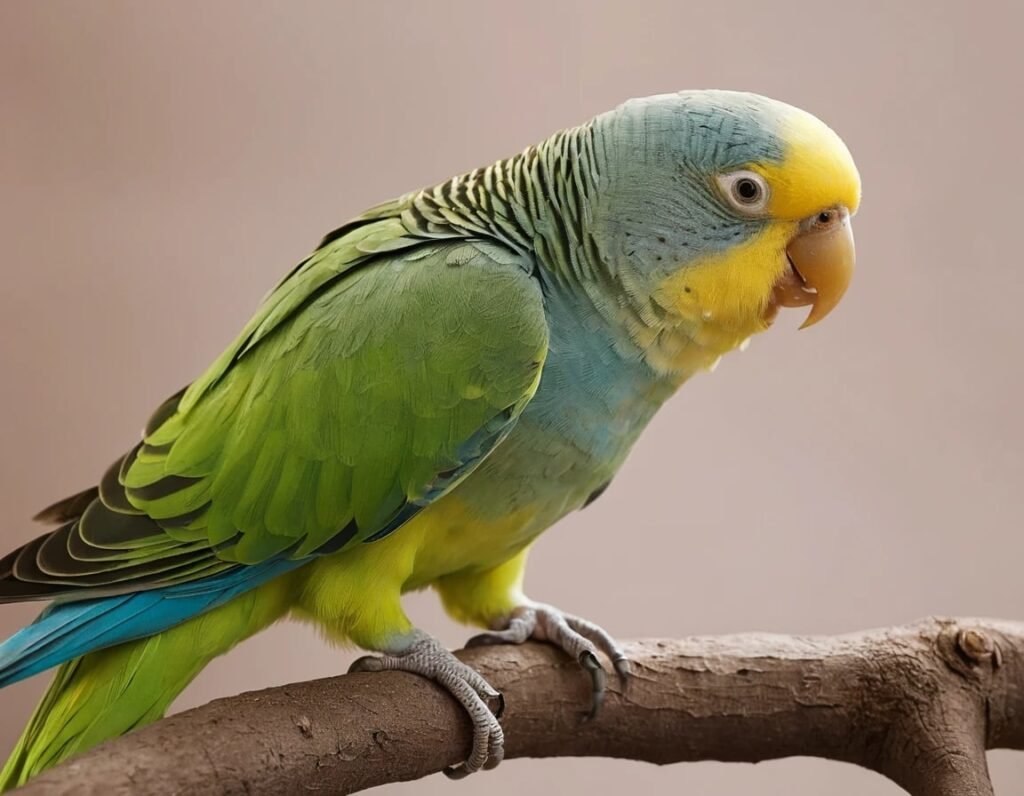
Top Foods to Avoid in a Parakeet’s Diet Chart
If you own a parakeet, you probably already know that these little birds have BIG appetites. They’ll peck at anything that looks remotely edible—including things they absolutely shouldn’t eat. (Yes, I’m looking at you, parakeet who just tried to steal my pizza crust.)
While seeds, pellets, fruits, and veggies are the staple of a good Parakeet diet chart, some foods are dangerous, unhealthy, or even toxic to your feathered friend. Let’s go over the worst offenders—the ones that should never, under any circumstances, end up in your parakeet’s food bowl.
1. Avocado – The “Silent Killer”
🥑 Why It’s Bad: Avocados contain persin, a toxin that can cause respiratory issues, heart failure, and even death in birds.
🐦 Parakeet’s Reaction: “But it’s green like my veggies! Why can’t I have it?”
🚫 Better Alternative: Broccoli or spinach—nutritious, safe, and still green!
2. Chocolate – Not for Feathered Sweet Tooths
🍫 Why It’s Bad: Chocolate contains theobromine and caffeine, which can cause seizures, hyperactivity, and heart problems in birds.
🐦 Parakeet’s Reaction: “You get to eat it, but I can’t? Unfair.”
🚫 Better Alternative: A slice of apple or banana—sweet and safe!
3. Caffeine – No Coffee Breaks for Parakeets
☕ Why It’s Bad: Birds are extra sensitive to caffeine, which can cause rapid heartbeat, hyperactivity, and even cardiac arrest.
🐦 Parakeet’s Reaction: “But you drink this every morning! Why can’t I?”
🚫 Better Alternative: Fresh, clean water—no espresso shots necessary.
4. Alcohol – No Parakeet Happy Hours
🍷 Why It’s Bad: Alcohol affects birds way faster than humans. Even a tiny sip can cause disorientation, poisoning, or worse.
🐦 Parakeet’s Reaction: “Why do you get to have all the fun?”
🚫 Better Alternative: Diluted fruit juice (no added sugar) for a fun little treat.
5. Onions & Garlic – More Than Just Bad Breath
🧄 Why It’s Bad: Onions and garlic contain compounds that can damage red blood cells, leading to anemia and digestive problems.
🐦 Parakeet’s Reaction: “It smells strong, so it must be tasty!”
🚫 Better Alternative: Carrots or bell peppers—crunchy and full of vitamins!
6. Salty & Sugary Snacks – No Junk Food Allowed
🍿 Why It’s Bad: Too much salt can cause dehydration and kidney issues, while sugary treats can lead to obesity and diabetes in birds.
🐦 Parakeet’s Reaction: “So… no chips? No cookies? What kind of life is this?”
🚫 Better Alternative: Unsalted, air-popped popcorn or a small piece of fruit.
7. Apple Seeds & Fruit Pits – Tiny but Toxic
🍏 Why It’s Bad: Apple seeds and fruit pits (like cherries and peaches) contain cyanide, which is highly toxic to birds.
🐦 Parakeet’s Reaction: “You mean the tiny part I like to chew on is the most dangerous?!”
🚫 Better Alternative: Seedless apples, pears, and berries.
8. Dairy – No Cheese for Your Cheeky Bird
🧀 Why It’s Bad: Birds lack the enzymes needed to digest lactose, which can cause digestive problems and discomfort.
🐦 Parakeet’s Reaction: “Wait, I can’t have pizza or cheese? This is outrageous.”
🚫 Better Alternative: Boiled egg (in moderation) for a protein boost.
9. Raw Beans – A Hidden Danger
🌱 Why It’s Bad: Raw beans contain toxins called lectins, which can be deadly for birds. Cooked beans? Totally fine. Raw beans? Absolutely not.
🐦 Parakeet’s Reaction: “But I see you eating beans all the time!”
🚫 Better Alternative: Sprouted seeds or cooked lentils for safe protein.
10. Mushrooms – Just Say No
🍄 Why It’s Bad: Some mushrooms contain toxins that can cause digestive issues and organ damage in birds.
🐦 Parakeet’s Reaction: “If it’s good enough for pizza, why not me?”
🚫 Better Alternative: Zucchini or cooked squash for a fun, safe veggie treat.
Parakeet Diet Chart: Safe vs. Unsafe Foods
Food Type | Safe for Parakeets? |
Avocado | ❌ No – Highly toxic |
Chocolate | ❌ No – Dangerous for birds |
Caffeine | ❌ No – Causes heart problems |
Alcohol | ❌ No – Toxic |
Onions & Garlic | ❌ No – Can cause anemia |
Salty/Sugary Foods | ❌ No – Can harm kidneys |
Apple Seeds | ❌ No – Contains cyanide |
Dairy Products | ❌ No – Birds can’t digest lactose |
Raw Beans | ❌ No – Contains toxins |
Mushrooms | ❌ No – Can be toxic |
Fresh Fruits (without seeds) | ✅ Yes – Apples, bananas, berries, etc. |
Vegetables (cooked/raw) | ✅ Yes – Carrots, spinach, bell peppers |
Sprouted Seeds | ✅ Yes – Nutritious and safe |
Boiled Egg (small amounts) | ✅ Yes – Great protein source |
Final Thoughts: Keep Your Parakeet’s Diet Safe!
A well-balanced Parakeet diet chart is the key to a long, happy, and healthy life for your bird. While parakeets may want to nibble on your snack, it’s up to you to keep them away from harmful foods.
So, the next time your parakeet gives you big, adorable eyes while you’re eating chips, just remember: They’ll thank you later for keeping them safe! (Even if they don’t look thankful now.)
What’s the Weirdest Thing Your Parakeet Tried to Eat?
Have you caught your parakeet trying to snack on something totally off-limits? Share your funniest bird food stories in the comments! 🐦😂
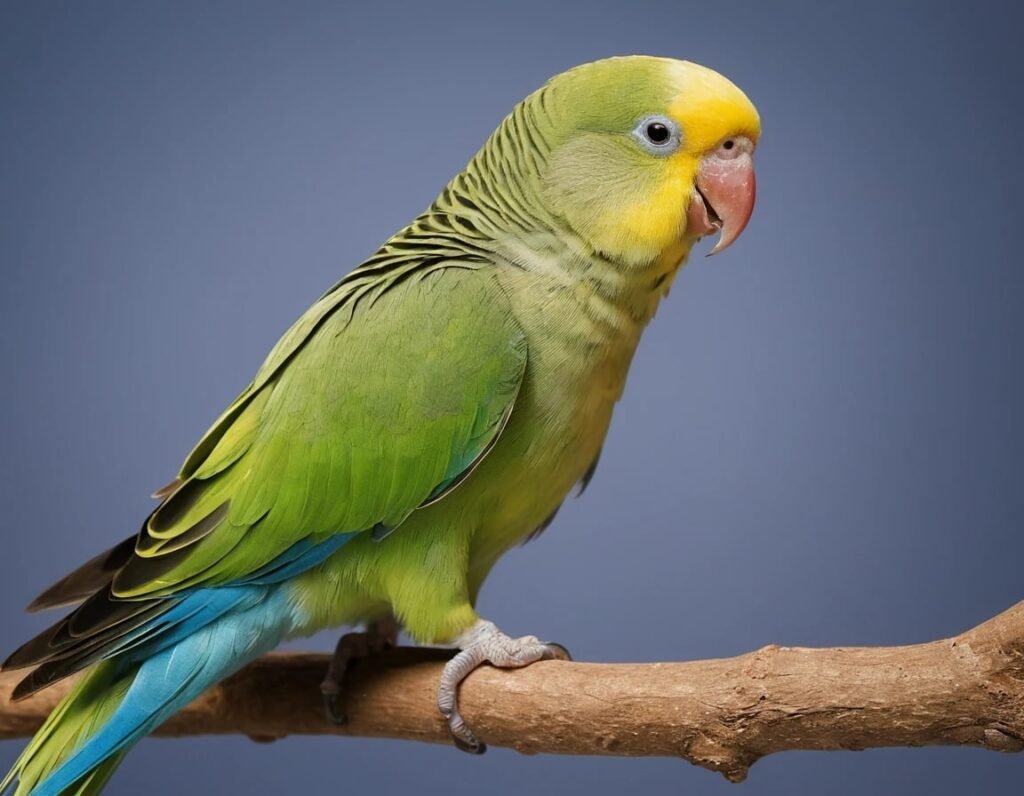
(FAQs) about the Parakeet diet chart:
1. What is the best diet for a parakeet?
Answer: A balanced diet includes high-quality pellets, seeds, fresh vegetables, fruits, and occasional treats like eggs or whole grains.
2. How much food should a parakeet eat daily?
Answer: A parakeet typically eats 1-2 teaspoons of seeds or pellets daily, along with fresh fruits and veggies.
3. Can parakeets survive on just seeds?
Answer: No! A seed-only diet lacks essential nutrients and can lead to health problems. Mix in pellets and fresh produce.
4. What fresh vegetables can parakeets eat?
Answer: Parakeets love carrots, spinach, kale, bell peppers, broccoli, and cucumbers. Avoid onions and garlic!
5. Can parakeets eat fruits?
Answer: Yes! Safe options include apples, bananas, oranges, strawberries, and melons. Just remove any seeds!
6. How often should I give my parakeet fresh food?
Answer: Daily! Replace uneaten fresh food within a few hours to avoid spoilage.
7. Are pellets better than seeds for parakeets?
Answer: Yes, pellets provide balanced nutrition, while seeds are high in fat and should be given in moderation.
8. Can parakeets eat bread?
Answer: A small piece of whole grain bread is fine as an occasional treat, but avoid white bread and anything processed.
9. What foods are toxic to parakeets?
Answer: Never feed them chocolate, avocado, caffeine, alcohol, onions, or garlic—these can be deadly!
10. Can parakeets eat rice?
Answer: Yes, cooked brown rice is safe, but serve it plain without salt, butter, or seasoning.
11. Do parakeets need protein in their diet?
Answer: Yes! Boiled eggs, mealworms, or cooked chicken can be given occasionally for extra protein.
12. Can parakeets drink milk?
Answer: No, parakeets are lactose intolerant. Stick to fresh water!
13. How do I get my parakeet to eat fresh food?
Answer: Try chopping it finely, mixing it with pellets, or eating some in front of them—they love to copy!
14. Can parakeets eat nuts?
Answer: Only unsalted, plain nuts like almonds or walnuts in very small amounts, as they are high in fat.
15. Should I give my parakeet vitamins?
Answer: If they eat a balanced diet, extra vitamins aren’t needed, but supplements may help birds on a seed-only diet.
16. Can parakeets eat peanut butter?
Answer: A tiny amount of natural, unsalted peanut butter is okay, but it’s very sticky, so be careful!
17. Do parakeets need grit?
Answer: No, parakeets hull their seeds, so they don’t need grit like some other birds.
18. Can parakeets eat human food?
Answer: Some, yes! Whole grains, plain pasta, cooked veggies, and small bits of fruit are fine in moderation.
19. How much water should a parakeet drink?
Answer: Parakeets drink about 1-2 teaspoons of water daily. Always provide clean, fresh water.
20. Can I feed my parakeet leftovers?
Answer: Not recommended! Human food is often too salty, sugary, or processed for their tiny bodies.

